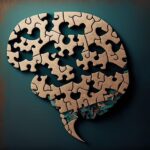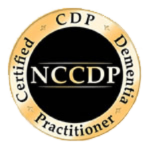Introduction
Alzheimer’s Disease, a name synonymous with memory loss and cognitive decline, stands as a central figure in the universe of dementias. Yet, while it is the most commonly diagnosed, it is but one star in a vast constellation of neurodegenerative conditions. As we delve into the intricate world of dementias, it becomes evident that Alzheimer’s, with its unique symptom profile, needs to be distinguished from its counterparts. This distinction is not merely academic; it is crucial for ensuring accurate diagnosis, which in turn paves the way for tailored interventions, enhancing the quality of life for affected individuals.
Core Symptoms of Alzheimer’s Disease:
Alzheimer’s Disease, a formidable player in the realm of neurological disorders, presents a unique set of symptoms that distinguish it from other forms of dementia. These symptoms, often subtle at onset, intensify as the disease progresses, offering key insights into the affected brain regions.
A hallmark of Alzheimer’s is the gradual and consistent erosion of memory, especially those that are recent. While it’s normal to occasionally forget where one placed their keys, an individual with Alzheimer’s might forget significant events, like a grandchild’s birthday or a recent holiday celebration. This memory impairment often leads to repetitive conversations, as recent discussions fade from their recollection.
Beyond memory, Alzheimer’s encroaches upon an individual’s cognitive abilities. Challenges in problem-solving become evident. What once were straightforward tasks, such as balancing a checkbook or following a recipe, now become Herculean challenges. Planning activities, be it organizing a day’s schedule or setting up a grocery list, becomes increasingly difficult. Even familiar tasks, like tying shoelaces or setting a table, can be daunting.
Spatial relationships, an often-overlooked cognitive function, are also impacted by Alzheimer’s. This leads to difficulties in reading, judging distances, or even recognizing colors. A person might struggle to determine the depth of a stair, leading to potential falls, or they might pour coffee next to a cup rather than into it.
One of the more disorienting symptoms of Alzheimer’s is confusion about time and place. Individuals might lose track of dates, seasons, or even the year. Familiar places might seem alien, leading to distressing episodes where they feel lost in their own homes. Additionally, the recognition of familiar faces fades, leading to heartbreaking moments where they can’t identify close family members or lifelong friends.
In understanding these core symptoms, we not only gain insight into the ravages of Alzheimer’s but also equip ourselves to offer empathy, patience, and support to those affected. Recognizing these signs is the first step in seeking timely interventions, ensuring that individuals with Alzheimer’s receive the care and understanding they deserve.
Symptoms of Related Dementias:
While Alzheimer’s Disease is the most commonly discussed form of dementia, several other types exhibit distinct symptoms and progression patterns, adding layers of complexity to the broader dementia landscape.
- Vascular Dementia, primarily resulting from reduced blood flow to the brain, often manifests after a stroke. Unlike the gradual onset of Alzheimer’s, the symptoms of Vascular Dementia can appear suddenly. These might include difficulties in concentration, frequent mood swings, and evident problems with motor skills, such as walking or holding objects. The episodic nature of this dementia means that symptoms might plateau for a while, only to worsen after another stroke or minor brain bleed.
- Lewy Body Dementia derives its name from the protein deposits, or Lewy bodies, found in the brain. This dementia type is notable for its vivid visual hallucinations, often involving animals or people. Physically, muscle rigidity akin to Parkinson’s Disease is common, leading to a shuffling walk or tremors. Additionally, affected individuals might experience pronounced sleep disturbances, including violent movements during dreaming.
- Frontotemporal Dementia targets the brain’s frontal and temporal lobes, which regulate personality, behavior, and language. Consequently, symptoms are often behavioral rather than memory-focused. Marked personality changes can emerge, with individuals acting out of character, displaying inappropriate behaviors, or neglecting personal hygiene. Language is also impacted, leading to speech difficulties or even making up words.
- Mixed Dementia is a term denoting the presence of symptoms from both Alzheimer’s and other types of dementia. An individual might exhibit memory lapses characteristic of Alzheimer’s but also show motor skill challenges seen in Vascular Dementia. This overlap can make diagnosis challenging, necessitating comprehensive medical evaluations.
In navigating the maze of dementias, understanding the distinct symptoms of each type is vital. It informs tailored care strategies, ensuring that individuals receive interventions best suited to their unique challenges. As research continues, the hope is that these delineations will guide targeted treatments, offering relief to countless affected individuals and their families.
Overlapping Symptoms and Diagnostic Challenges:
The realm of dementias, with its diverse types and manifestations, presents a diagnostic puzzle even for seasoned medical professionals. While each dementia type has hallmark symptoms, the overlaps and commonalities can make accurate diagnosis a challenge. A ubiquitous symptom across dementias is memory loss. While Alzheimer’s might be characterized by a gradual forgetting of recent events, Vascular Dementia might present with more episodic memory challenges. The nuances lie in the progression. For instance, while memory loss in Alzheimer’s is consistent, in Vascular Dementia, it might plateau between episodes. These subtle differences require keen observation and thorough patient history.
Behavioral and mood changes further muddy the diagnostic waters. Irritability, sudden mood swings, depression, or heightened anxiety can manifest in multiple dementias, from Frontotemporal Dementia to Lewy Body Dementia. Such symptoms, while indicative of an underlying neurological challenge, don’t pinpoint a specific dementia type, necessitating a deeper dive into other presenting symptoms.
Physical manifestations, such as tremors, muscle rigidity, or a shuffling walk, can appear in various conditions. While these are hallmark symptoms of Lewy Body Dementia, owing to its Parkinson’s-like physical symptoms, they can also appear in advanced stages of Alzheimer’s or Vascular Dementia, making it essential to consider the broader symptom landscape.
Given these overlaps, the importance of comprehensive medical evaluations cannot be overstated. Beyond a simple physical exam or patient history, brain scans, including MRIs or CT scans, can offer insights into areas of brain damage or atrophy. Neurological assessments, testing reflexes, balance, and sensory function, provide additional diagnostic clues. In some cases, neuropsychological tests might be employed, evaluating memory, problem-solving, attention, and language skills.
In conclusion, while dementias might share a common thread in their impact on cognition and function, the diagnostic journey is intricate. It underscores the need for thorough evaluations, patient-centric care, and continuous research to refine diagnostic tools and protocols.
Conclusion
In the intricate dance of dementias, where symptoms overlap and conditions intertwine, the clarion call is for early diagnosis. Recognizing the signs, differentiating between the types, and seeking timely interventions can dramatically alter the trajectory of these conditions, offering hope where once there was despair. Yet, beyond the immediate clinical landscape lies a broader mission: the need for persistent research to unlock the mysteries of the brain and the dementias it can host. Coupled with robust awareness campaigns, this research can dispel myths, reduce stigmas, and empower individuals and families to face Alzheimer’s and related dementias with knowledge, resources, and hope.





















